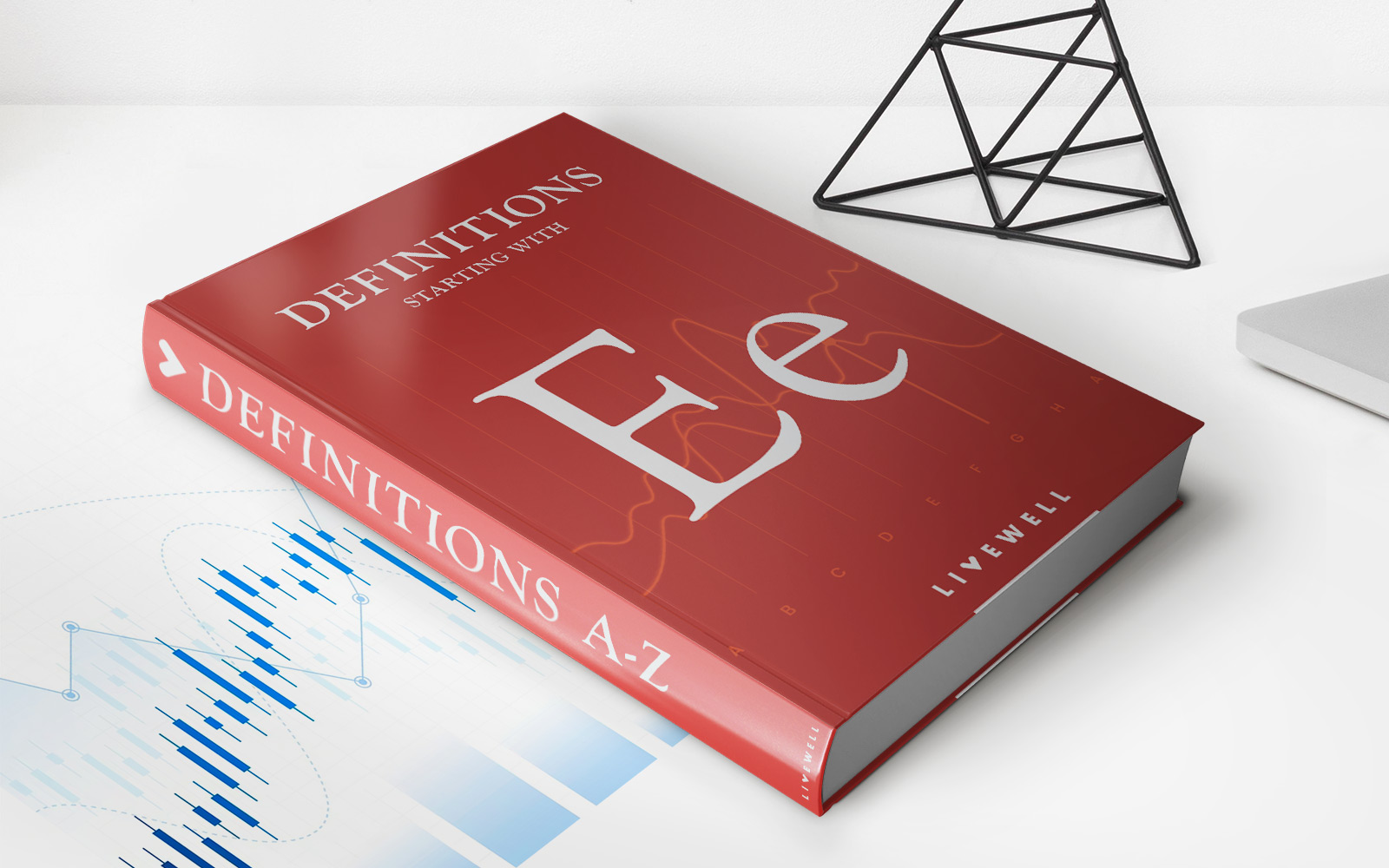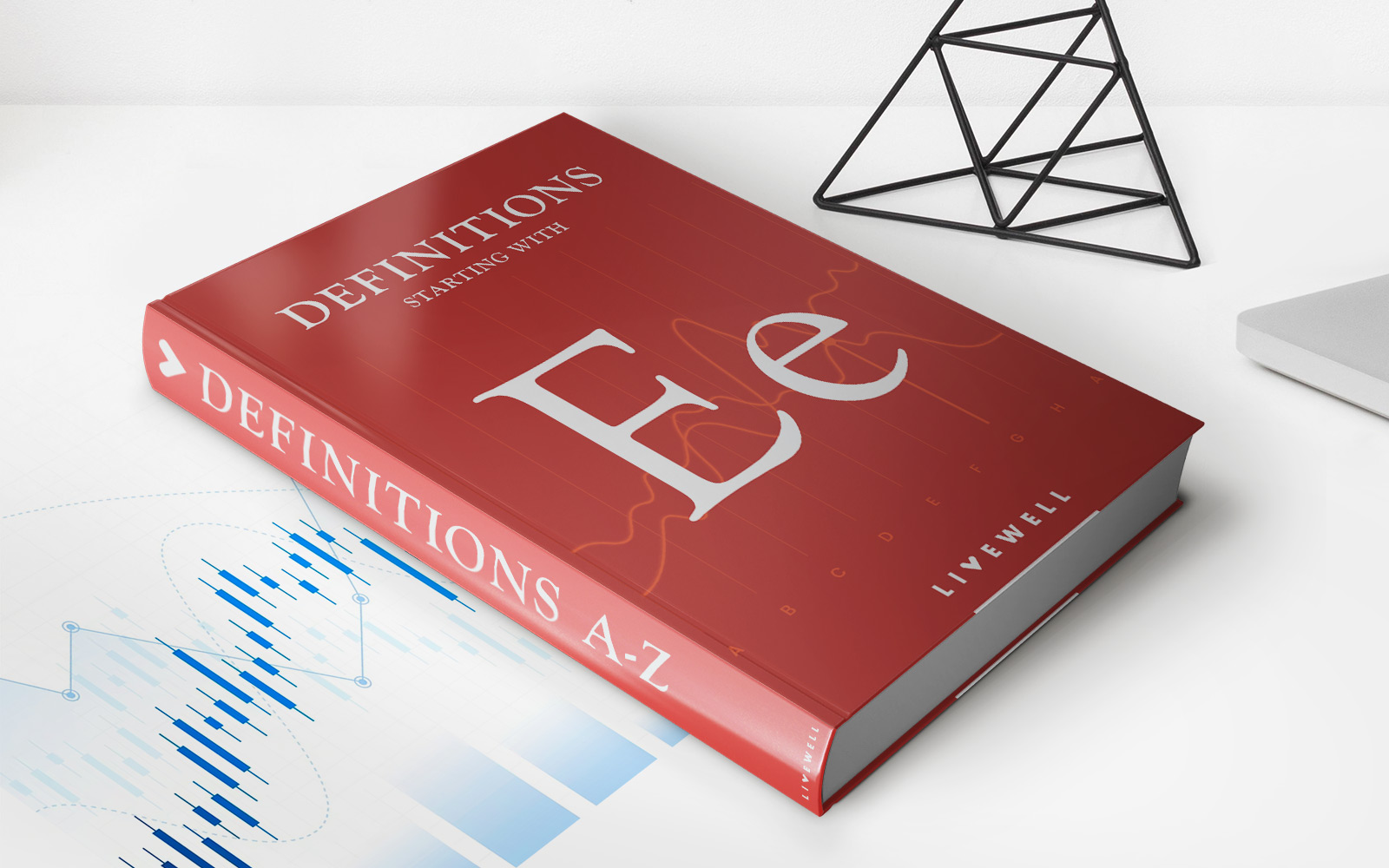

Finance
How To Buy A House With Life Insurance
Published: November 21, 2023
Learn how to use life insurance to finance your dream home. Discover the steps and benefits of buying a house with life insurance.
(Many of the links in this article redirect to a specific reviewed product. Your purchase of these products through affiliate links helps to generate commission for LiveWell, at no extra cost. Learn more)
Table of Contents
- Introduction
- Understanding Life Insurance
- Assessing Your Financial Situation
- Researching and Choosing a House
- Choosing the Right Life Insurance Policy
- Adjusting Your Life Insurance Policy
- Applying for a Mortgage
- Using Life Insurance to Secure the Mortgage
- Paying Off the Mortgage with Life Insurance
- Conclusion
Introduction
Buying a house is a significant milestone in anyone’s life. It’s a major financial decision that requires careful planning and consideration. One option that many people overlook when it comes to financing a home purchase is utilizing life insurance. Life insurance can provide a unique opportunity to secure a mortgage and protect the financial well-being of your loved ones.
In this article, we will explore how to buy a house with life insurance, step by step. We’ll cover understanding life insurance, assessing your financial situation, researching and choosing a house, selecting the right life insurance policy, adjusting your policy as needed, applying for a mortgage, using life insurance to secure the mortgage, and ultimately, paying off the mortgage with life insurance.
By leveraging life insurance, you can potentially save money, provide a safety net for your family, and secure your dream home. However, it’s important to note that every individual’s financial situation is unique, and it’s essential to consult with a qualified financial advisor to determine if this strategy is suitable for you.
So, whether you’re a first-time homebuyer or looking to upgrade, let’s dive into the world of buying a house with life insurance and discover how you can turn your homeownership dreams into a reality.
Understanding Life Insurance
Before delving into how to use life insurance to buy a house, it’s crucial to have a clear understanding of what life insurance is and how it works. Life insurance is a contract between an individual (the policyholder) and an insurance company. In exchange for regular premium payments, the insurance company provides a lump sum payment, known as the death benefit, to the policyholder’s beneficiaries upon their death.
Life insurance policies come in various types, including term life insurance and permanent life insurance. Term life insurance provides coverage for a specified period, typically 10, 20, or 30 years, and is designed to provide financial protection during those high-risk years when you have significant obligations like a mortgage or supporting a family. Permanent life insurance, on the other hand, offers coverage for the entirety of your life and often includes a cash value component that can grow over time.
When exploring the option of using life insurance to buy a house, it’s important to consider that not all policies are created equal. Some policies may have restrictions or limitations that could impact your ability to use the death benefit towards a mortgage. Therefore, it’s essential to carefully review your policy or consult with a life insurance expert to ensure that your policy aligns with your homeownership goals.
In addition to providing financial protection, life insurance can serve as a valuable asset that can be utilized for various purposes, such as supplementing retirement income, funding education expenses, or as we will focus on in this article, helping to secure a mortgage.
Now that we have a basic understanding of life insurance, let’s move on to the next step: assessing your financial situation.
Assessing Your Financial Situation
Assessing your financial situation is a crucial step when considering buying a house with life insurance. It involves evaluating your income, expenses, savings, and any existing debts or financial obligations. This assessment will give you a clear picture of your affordability and help you determine the amount of coverage you need from your life insurance policy.
Start by calculating your monthly income and subtracting your regular expenses, such as rent, utilities, groceries, and transportation costs. This will give you an idea of how much disposable income you have each month to allocate towards a mortgage payment.
Consider your current financial obligations, such as student loans, car loans, or credit card debt. These debts will impact your ability to take on additional financial responsibilities, like a mortgage payment. Take into account any financial goals and savings targets you may have, such as establishing an emergency fund or saving for retirement.
It’s essential to maintain a healthy debt-to-income ratio (DTI) to qualify for a mortgage. Lenders typically recommend that your total monthly debt payments, including the mortgage payment, should not exceed a certain percentage of your monthly income (usually 36% to 43%). Review your DTI and determine if you need to pay off any debts or reduce your monthly expenses before taking on a mortgage.
Once you have a clear understanding of your financial situation, you can determine how life insurance fits into the equation. Consider the following factors:
- The amount of coverage you need to protect your family in case of your untimely death. This should include enough to cover the mortgage, living expenses, and other financial obligations.
- The type of life insurance policy that aligns with your financial goals and budget, whether it’s term life insurance or permanent life insurance.
- The affordability of the life insurance premiums in relation to your income and expenses.
- The length of coverage you need. If you plan on paying off your mortgage within a specific time frame, consider a term life insurance policy that matches that duration.
By assessing your financial situation thoroughly, you can determine the appropriate coverage amount and policy type that will support your goal of buying a house with life insurance. Once you have a clear understanding of your finances, you can move on to the next step: researching and choosing a house.
Researching and Choosing a House
As you embark on your journey to buy a house using life insurance, the next step is to research and choose the right property. This step requires careful consideration and evaluation to find a home that meets your needs, budget, and long-term goals.
Start by determining your priorities and preferences. Consider factors such as location, size, number of bedrooms and bathrooms, amenities, and proximity to schools, workplaces, and other essential facilities. Make a list of your must-haves and nice-to-haves to help you narrow down your options.
Once you have a clear idea of what you’re looking for, begin your search. Utilize online real estate platforms, consult with real estate agents, and explore local neighborhoods to find potential properties that align with your criteria.
During the research and viewing process, it’s essential to consider the financial aspects of each property. Evaluate the asking price, potential appreciation, property taxes, homeowners association (HOA) fees, and any additional costs associated with maintaining the property, such as repairs and utilities.
Keep in mind that while it’s essential to find a property that you love, it’s equally important to choose a house that you can comfortably afford. That’s where your financial assessment and life insurance come into play.
Consider the following factors when choosing a house:
- The affordability of the mortgage payments in relation to your monthly income and expenses.
- The potential impact of property taxes and other costs on your overall budget.
- The long-term financial plan and goals you have in mind, such as building equity or potential resale value.
Remember that buying a house is a significant investment, and you want to ensure that it aligns with your financial objectives and provides a comfortable living situation for you and your family.
By carefully researching and choosing a house that suits your needs and financial capabilities, you will be one step closer to realizing your dream of homeownership using life insurance as part of your journey. Once you’ve found your ideal property, you can move on to the next step: choosing the right life insurance policy.
Choosing the Right Life Insurance Policy
When it comes to buying a house with life insurance, selecting the right policy is crucial. The type of life insurance policy you choose will determine the coverage, premium payments, and how the death benefit can be used to secure a mortgage.
There are two main types of life insurance to consider: term life insurance and permanent life insurance.
Term Life Insurance: Term life insurance provides coverage for a specified period, typically 10, 20, or 30 years. It offers a death benefit if the insured individual passes away during the term. Term life insurance is a popular choice for those looking to protect their loved ones during high-risk years, such as when raising a family or paying off a mortgage. It generally has lower premiums compared to permanent life insurance.
Permanent Life Insurance: Permanent life insurance provides coverage for the entirety of your life. It accumulates a cash value component over time, which you can access through loans or withdrawals. Permanent life insurance offers more flexibility and can potentially serve as an investment vehicle. However, it typically comes with higher premiums.
Consider the following factors when choosing the right life insurance policy:
- Duration: If you plan to pay off your mortgage within a specific time frame, a term life insurance policy that matches that duration may be a suitable choice. If you’re looking for lifelong coverage and potential cash value accumulation, permanent life insurance is worth considering.
- Coverage Amount: Calculate the amount of coverage you need to protect your loved ones financially in the event of your passing. Consider the mortgage balance, living expenses, and other financial obligations when determining the coverage amount.
- Premium Payments: Evaluate the affordability of the premium payments in relation to your budget. Ensure that you will be able to comfortably meet the premium obligations throughout the duration of the policy.
- Death Benefit Usage: Review the policy’s terms and conditions to understand how the death benefit can be used to secure a mortgage. Some policies may require specific provisions or endorsements to facilitate this process.
It’s crucial to consult with a life insurance professional or financial advisor who can guide you through the process of choosing the right policy. They can assess your unique financial situation and help you select a policy that aligns with your homeownership goals and overall financial well-being.
Once you’ve chosen the right life insurance policy, you’ll need to make any necessary adjustments to ensure it adequately covers your mortgage and other financial obligations. This brings us to the next step: adjusting your life insurance policy.
Adjusting Your Life Insurance Policy
After selecting the right life insurance policy for buying a house, it’s important to review and make any necessary adjustments to ensure that it adequately aligns with your mortgage and overall financial situation. Here are some key steps to consider when adjusting your life insurance policy:
Review Your Coverage: Take a close look at the coverage amount of your life insurance policy. Ensure that it is sufficient to cover your mortgage balance, living expenses, and any other debts or financial obligations in the event of your passing. If needed, consider increasing the coverage amount to provide a safety net for your loved ones.
Policy Riders and Provisions: Some life insurance policies offer additional provisions or riders that can be added to the policy to tailor it to your specific needs. For example, you may want to explore a mortgage protection rider, which provides an extra death benefit specifically designated to cover your mortgage in the event of your death. Review the options available and discuss with your insurance provider or agent to determine if any riders or provisions should be added to your policy.
Payment Frequency and Affordability: Consider the frequency of your premium payments and assess if it aligns with your cash flow. You may have the option to pay premiums monthly, quarterly, or annually. Choose a payment frequency that works best for your budget and ensures that you can consistently meet the premium obligations.
Beneficiary Designations: Review and update the beneficiary designations on your life insurance policy, if necessary. Ensure that the beneficiaries listed reflect your current wishes and any changes in your life circumstances, such as marriage, divorce, or the birth of a child.
Policy Term and Expiration: If you have a term life insurance policy, confirm the term duration and note the expiration date. Align the term of your policy with your mortgage repayment timeline so that your coverage remains in effect until the mortgage is fully paid off.
It is important to mention that adjusting your life insurance policy may come with certain limitations or requirements set by the insurance provider. Make sure to thoroughly review your policy documents, consult with your insurance provider or agent, and seek advice from a financial advisor to ensure that you are making informed decisions that best suit your needs.
Once you have adjusted your life insurance policy to align with your mortgage and financial goals, you can proceed to the next step: applying for a mortgage.
Applying for a Mortgage
Applying for a mortgage is a critical step in the process of buying a house with life insurance. A mortgage is a loan specifically designed to finance the purchase of a home, and it plays a significant role in the overall affordability and feasibility of your homeownership journey. Here are some essential steps to consider when applying for a mortgage:
1. Research Lenders: Start by researching and comparing different lenders to find the one that offers the best terms and interest rates. Consider factors such as their reputation, customer reviews, and the range of mortgage products they offer.
2. Gather Documentation: Mortgage lenders require various documents to evaluate your financial situation. Gather necessary documents such as proof of income, tax returns, bank statements, and employment history. Be prepared to provide additional documentation, if requested.
3. Check Your Credit: Your credit score plays a crucial role in determining your eligibility for a mortgage and the interest rate you’ll receive. Before applying, review your credit report and address any errors or outstanding debts that could impact your creditworthiness.
4. Get Pre-Approved: Consider getting pre-approved for a mortgage before house hunting. This involves completing a mortgage application and providing the necessary documentation to a lender. Getting pre-approved gives you a clear understanding of your borrowing capacity and demonstrates to sellers that you are a serious buyer.
5. Compare Mortgage Options: Work with your lender to explore different mortgage options available to you. Consider factors such as interest rates, loan terms, down payment requirements, and any specific mortgage programs that may benefit you, such as first-time homebuyer programs or government-backed loans.
6. Calculate Affordability: Evaluate your financial situation to determine how much you can comfortably afford in terms of monthly mortgage payments. Consider your current income, expenses, and any anticipated changes in your financial situation in the future. Use online calculators or consult with a mortgage professional to help you determine an affordable mortgage amount.
7. Submit the Application: Once you have chosen the lender and mortgage option that aligns with your needs, submit your mortgage application. Be prepared to provide additional documentation or answer any questions that may arise during the underwriting process.
Applying for a mortgage can be a complex process, but it’s an essential step towards achieving your dream of homeownership. Working closely with your lender and being proactive in providing the required documentation will help streamline the application process and increase your chances of mortgage approval.
Once you have successfully secured a mortgage, the next step is to utilize your life insurance policy to secure the mortgage. We will explore this process in the next section.
Using Life Insurance to Secure the Mortgage
Using life insurance to secure the mortgage is a strategic approach that provides an additional layer of financial protection for both you and your loved ones. By leveraging the death benefit of your life insurance policy, you can ensure that your mortgage is covered in the event of your passing. Let’s explore the steps involved in using life insurance to secure your mortgage:
1. Communication with Your Lender: Inform your mortgage lender about your intention to use life insurance to secure the mortgage. They will guide you through the process and provide any necessary documentation or forms to complete.
2. Provide Policy Details: Submit your life insurance policy details to the lender, including the policy name, number, and contact information for your insurance provider. This allows the lender to verify the policy’s validity and confirm the death benefit amount.
3. Beneficiary Designations: Ensure that your life insurance policy designates your spouse, partner, or any other relevant individual as the primary beneficiary. This ensures that the death benefit will be used to cover the mortgage in the event of your passing.
4. Mortgage Assignment: Some lenders may require you to complete a mortgage assignment, which assigns the mortgage payout to the lender in the event of your death. This helps protect the lender’s interests and ensures that the death benefit is used specifically for the mortgage payment.
5. Keep Up with Premium Payments: It’s crucial to consistently pay your life insurance premiums to keep the policy active and maintain the mortgage coverage. Missing premium payments could result in the policy lapsing and the loss of coverage.
6. Regular Policy Review: It’s advisable to periodically review your life insurance policy and adjust the coverage amount if necessary. As you pay down your mortgage or if your financial situation changes, ensure that the coverage remains adequate to cover the remaining mortgage balance.
By using life insurance to secure the mortgage, you provide peace of mind for your family in the event of an unforeseen tragedy. The death benefit from the policy can be used to pay off or cover the mortgage, ensuring that your loved ones can continue to reside in the home without financial burden.
Note that the specific process and requirements may vary depending on the lender and the terms of your life insurance policy. It is recommended to consult with your insurance provider, lender, or a financial advisor to fully understand the process and ensure that your mortgage is appropriately secured.
Now that you have successfully used life insurance to secure your mortgage, the next step is to consider the option of paying off the mortgage with life insurance. We will explore this topic in the following section.
Paying Off the Mortgage with Life Insurance
Paying off the mortgage with life insurance can be a viable strategy to ensure that your loved ones are not burdened by the mortgage debt if you were to pass away. By utilizing the death benefit of your life insurance policy, you can eliminate or substantially reduce the outstanding mortgage balance. Here are the key steps involved in paying off the mortgage with life insurance:
1. Assess Your Mortgage Balance: Calculate the current outstanding balance on your mortgage. This will help determine the coverage amount needed from your life insurance policy to pay off the mortgage in its entirety.
2. Review Your Life Insurance Coverage: Evaluate your life insurance policy to ensure that the death benefit will be sufficient to cover the mortgage balance. If needed, consider increasing the coverage amount to provide additional financial security for your loved ones.
3. Communicate with Your Insurance Provider: Inform your insurance provider about your intention to use the death benefit to pay off the mortgage. They will guide you through the necessary steps and provide any required documentation.
4. Name the Mortgage as a Beneficiary: Instruct your insurance provider to designate the mortgage lender as a specific beneficiary of your life insurance policy. This ensures that the death benefit will be paid directly to the lender to settle the mortgage debt.
5. Keep Beneficiary Designations Updated: Regularly review and update the beneficiary designations on your life insurance policy to ensure they align with your wishes. As circumstances change, such as a change in mortgage lenders or paying off the mortgage, revise the designations accordingly.
6. Understand Tax Implications: It’s important to be aware of any potential tax implications when using life insurance to pay off the mortgage. In some cases, the death benefit may be subject to estate taxes or other considerations, so consult with a tax professional or financial advisor to understand the specific implications in your situation.
7. Notify Your Loved Ones: Inform your loved ones about the existence and purpose of your life insurance policy. Ensure that they are aware of the plan to use the death benefit to pay off the mortgage, so they can follow the necessary steps in the event of your passing.
By paying off the mortgage with life insurance, you provide your loved ones with a mortgage-free home and greater financial stability. They can continue to reside in the home without the burden of the mortgage payments, providing them with a secure and stable living environment.
Before implementing this strategy, it’s crucial to review your specific life insurance policy, consult with your insurance provider and a financial advisor, and consider the individual characteristics of your mortgage and financial situation. This will ensure that paying off the mortgage with life insurance is the most suitable and beneficial choice for you and your loved ones.
With the mortgage paid off, you can now fully enjoy the benefits of homeownership and provide a lasting legacy for your family.
Conclusion
Buying a house is a significant milestone, and using life insurance as part of the process can provide both financial protection and peace of mind for you and your loved ones. By understanding life insurance, assessing your financial situation, researching and choosing a house, selecting the right policy, adjusting it as needed, applying for a mortgage, and utilizing life insurance to secure and potentially pay off the mortgage, you can navigate the path to homeownership effectively.
Remember that every individual’s financial situation is unique, and it’s important to consult with qualified professionals, such as financial advisors and insurance providers, to determine the best strategy for your needs.
By integrating life insurance into your home buying journey, you can provide financial security for your family, protect your home investment, and mitigate the potential burden of a mortgage in the event of your passing.
As you embark on this exciting adventure, take the time to educate yourself, conduct thorough research, and lay the groundwork for a solid financial plan. With careful consideration and expert guidance, you can confidently navigate the process of buying a house with life insurance and make strides towards achieving your dream of homeownership.
Ready to turn the key to your new home? Start exploring your options today, and leverage the power of life insurance to secure your future and create a comfortable haven for your loved ones.














